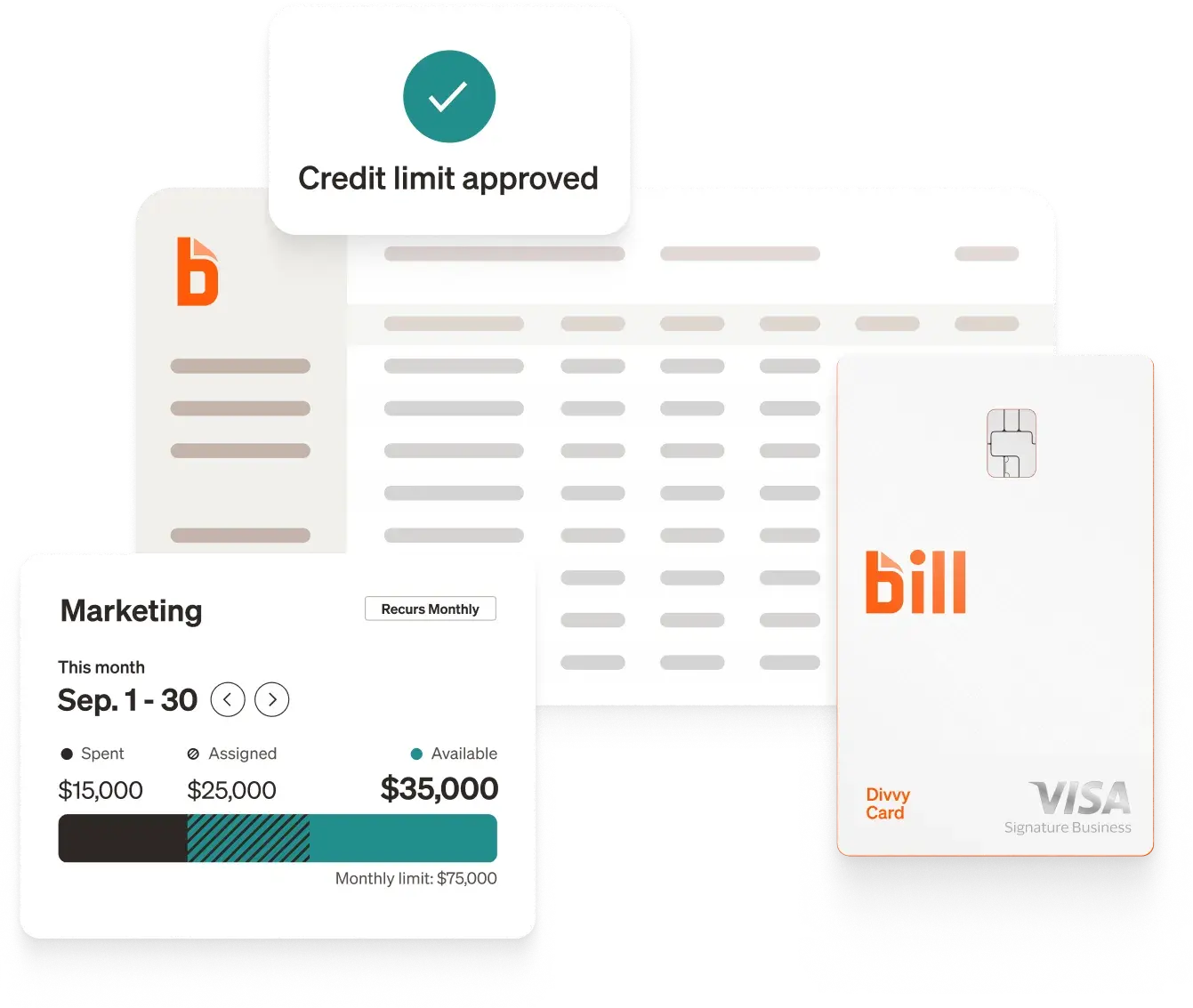When it comes to financial management in healthcare, finding success is critical care. Stable finances enable healthcare providers to maintain operations, remain compliant with regulations, and deliver top-notch care to patients.
But healthcare also faces some serious financial obstacles like rising costs, complicated regulations, and patient demands that often stretch resources to its limit. Because of these obstacles, knowing the basics of healthcare financial management is a must for someone like a financial officer, administrator, or consultant.
From explaining the nitty gritty regulations to deep-diving into automated bookkeeping like BILL, you’ll learn the top 6 strategies for how to make your healthcare organization’s finances thrive.

What is healthcare financial management?
Healthcare financial management is about making smart financial decisions to help organizations run smoothly and thrive. It involves planning, organizing, and managing money to ensure everything stays on track.
You might hear terminology that defines healthcare financial management as being composed of the “4 C’s of healthcare finance”: Costs, Cash, Capital, and Control.
Here’s a quick breakdown of the 4 C’s of healthcare financial management–
Costs: How much money does it take to run the facility or organization? It’s all about taking a closer look at your costs, having honest conversations with suppliers, and finding smarter ways to use resources. The goal is to keep things running smoothly while still providing excellent patient care.
Cash: How much money do you have on hand right now to cover short-term expenses? You should know how much direct cash you have to pay for day-to-day operations. If you have an effective budget, you should have cashflow readily available to cover everyday expenses like faculty salaries, operation costs, and insurance payments.
Capital: How much money do you have for larger, investment projects? Capitol is for long-term investments like renovations, new technology, training programs, and tech updates—all things necessary for innovation and better patient care. Think of capital as the funding you have for investing in the future of your healthcare organization.
Control: How are you spending money ethically and efficiently? Control means adhering to compliance measures while preventing errors. Whether it’s billing mistakes or preventing fraud, having strong financial oversight ensures your healthcare budget is being spent within regulations.
Healthcare financial reporting and analysis
Financial reporting and analysis are essential to healthcare financial management. These processes involve:
- Having accurate documentation: Capturing and organizing transactions for a bird eye’s view of the healthcare organization
- Creating a realistic budget: Moving resources across various departments to crush operational and clinical goals
- Analyzing insightful trends: Understanding revenue cycles and patient billing data to find opportunities for cost savings
- Forecasting future performance: Utilizing historical data to predict outcomes and ensure long-term stability of healthcare finances.
Pro tip: Automated tools like BILL are essential to healthcare financial reporting and analysis. Bypassing human errors, managing payments, all while reducing admin costs and increasing revenue is exactly what BILL does. This can save employees a lot of time, especially for those managing heavy workloads or working with limited resources. With automation, finance professionals can shift their focus to more strategic, high-value tasks or even enjoy some much-needed time back in their day. Leveraging BILL automation is a win-win for the healthcare provider, its employees, and patients.
Healthcare compliance, ethics, and regulations
Staying on top of financial regulations in healthcare is super important as well. Organizations need to follow key rules like Health Insurance Portability and Accountability Act (HIPAA) and Anti-Kickback laws to keep things ethical, secure, and accountable.
These regulations aren’t just about ticking boxes—they're about building trust with patients and stakeholders. To keep up, financial teams need solid internal controls and should regularly check their processes with audits to make sure everything’s running smoothly and by the book.
Importance of efficient financial management in healthcare
Efficient financial management entails so much! Hospitals and clinics are tasked with managing limited resources while also ensuring high-quality patient care. They not only have to create operational sustainability but also enhance the patient experience with the resources they have available. In addition, they must stay compliant with policies in order to protect the organization from fines or legal troubles. All these elements contribute to the long-term growth of an efficient financial healthcare organization.
The role of financial management in healthcare
Money management is crucial when it comes to keeping operations in sync with a healthcare org's overall goals and keeping compliant. By making sure resources are used wisely, financial teams help healthcare providers deliver excellent care without breaking the bank.
For example, tracking financial reports can help administrators see how much they’re spending per patient and spot areas where things could run more efficiently. Following compliance rules and keeping costs in check go hand-in-hand to make sure the organization stays both profitable and trustworthy.

6 strategies to improve healthcare financial management
How can healthcare organizations enhance their financial management systems?
1. Leverage billing and payroll automation
Handling billing, payroll, and reporting manually is time-consuming and prone to errors. Automating these processes with platforms like BILL can:
- Streamline the billing and payroll process
- Reduce administrative costs
- Improve reporting accuracy
- Free up resources for patient-facing activities
- Gain real-time financial insights
- Enhance Revenue Cycle Management (RCM)
2. Optimize RCM from beginning to end
RCM is the overall process of managing patient services from registration to payment. An efficient RCM process ensures faster reimbursements and minimizes write-offs. Strategies to improve it include:
- Creating a patient-friendly billing systems
- Regularly auditing claims to reduce denials
- Integrating technology for streamlined processes
3. Invest in financial training for your staff
Training your financial and operational teams on compliance, cost management, and the latest tools helps build a knowledgeable crew that's ready to tackle challenges with confidence.
4. Enhance data analytics
Leverage analytical tools to gain insights from financial data. Advanced analytics can:
- Identify cost-saving opportunities
- Enhance forecasting accuracy
- Support strategic decision-making
5. Organize the budgeting processes
Build a budgeting plan that aligns with your organization’s priorities. Use tools that let you track expenses in real-time, so you can quickly shift funds when needed. This way, you’ll make sure resources are being used wisely and can adjust on the spot—keeping your organization on track with its goals.
6. Strengthen regulatory compliance programs
Stay ahead of ever-evolving regulations by:
- Running regular compliance audits
- Leveraging AI-powered tools to monitor and flag anomalies
- Educating staff on regulatory requirements
Upgrade your healthcare finances with BILL
Free your team from manual paperwork. BILL simplifies time-consuming tasks such as billing, payments, and reporting, allowing you to focus on what truly matters: patient care.
Automation made for busy healthcare organizations
“Since automating AP with BILL, we’ve been able to repurpose our full-time accounting employee to focus on more impactful strategic work like diving into financial performance and cash flow.” - Chief Financial Officer at Millennium Physicians Christopher Hopeck
Save time and money with the right tools
“BILL’s AI saves me a little bit of time with each invoice. And when I’m processing so many emails and invoices every week, even a few seconds here and there add up over time." - Director of Finance at Parsley Health Rebecca Chapman
Experience the difference today and take your business to new heights.








